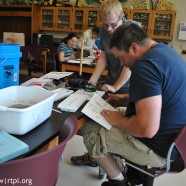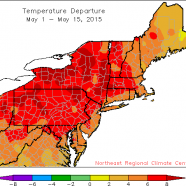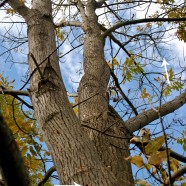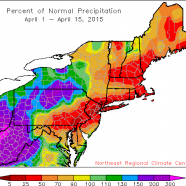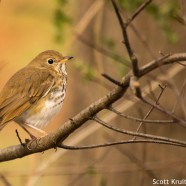Successful WAVE Training
We couldn’t have asked for a more gorgeous day to get out into a local stream and evaluate its water quality! Here are some photos from last week’s WAVE (Water Assessments by Volunteer Evaluators) training led by NYS DEC. Using the knowledge and hands-on experiences that was gained through our training, each of us will be able to go out and assess nearby streams to determine if they are impacted by pollutants, sedimentation and so on based on the little critters (macro-invertebrates) we find living beneath the rocks and logs within each. As we work on the Chadakoin River, in...
Read MoreScorching May
The first half of the month of May 2015 was a quietly scorching one, with the heat turned all the way up in the Northeast. You may not believe it based on the outdoor feel of our day to day weather, but the entire region was far warmer than usual. While we did not have the extreme highs or actual heat waves, a stretch or days well into the 90s or anything particularly memorable, we have been consistently warmer than average for our highs and often above the long-term lows. The Northeast Regional Climate Center map here shows us the tale. The coolest part has been sections of Maine which were...
Read MoreBirds As EAB Indicators
Being small in size as an adult and hidden underneath tree bark as larvae, Emerald Ash Borer (EAB) can be rather difficult for humans to detect. For bark-foraging birds such as woodpeckers however, this is not a difficult task. As these birds move up and down a tree’s trunk and branches, they listen for larvae chewing on the wood and can even feel vibrations from the larvae moving through the galleries they create. Once detected, woodpeckers will hammer away at the bark in order to collect the larvae beneath. While the larvae is removed from the bark, a hole and missing bark around...
Read MoreTale of Two April Climates
The first half of April 2015 was a Tale of Two Climates: when compared to long-term averages, New England was cool to cold and dry, sometimes exceptionally so, while the Mid-Atlantic was warm and wet, sometimes ridiculously so. Fortunately since then it has balanced out to some degree (pun intended) and conditions have moderated in both regards. In my opinion we seem to be at a relatively average place in terms of “green out”, with buds and leaves near where they “should” be for our returning birds and emerging insects. Scott Kruitbosch Conservation & Outreach...
Read MoreAutumn Hermit Thrush (Catharus guttatus)
This beautiful Hermit Thrush (Catharus guttatus) posed wonderfully for me in the shade earlier today, taking a quick break from foraging in mounds of leaf litter. They are a shy species that can be found on the edges of forests and woodlands, even your yard, if there is enough space and habitat for them to find insects. As we near the winter their diet is going to shift to include various berries. I was surprised to find several of them this weekend, possibly having moved south and been more boldly active given all of the cold temperatures lately. They will enjoy this warm-up making bug...
Read More



